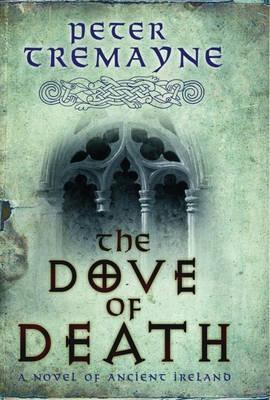I received this book for free from the library in exchange for an honest review. This does not affect my opinion of the book or the content of my review.
Source: the library
The Chalice of Blood
by
Peter Tremayne
historical mystery in Hardcover edition that was published by Headline Publishing on July 8, 2010 and has 384 pages.
Explore it on Goodreads or Amazon
Other books by this author which I have reviewed include Valley of the Shadow, The Dove of Death, Murder Most Medieval: Noble Tales of Ignoble Demises, Behold a Pale Horse, The Seventh Trumpet, Atonement of Blood, The Second Death
Twenty-first in the Sister Fidelma medieval mystery series revolving around a nun who is a lawyer and the husband who assists her in their detecting.
My Take
The primary theme here is religious intolerance, so antithetical to what Jesus taught. The negative need to destroy anyone who believes opposite your own beliefs. To burn any books which do not conform to your thoughts.
Tremayne makes an excellent point in what he relates about Celsus, the book that is causing such a hurrah in the abbey as Celsus points out that:
“…why should Christians put themselves in such a unique relation to their creator as to make him one of them? And why should God come in men in the form of one nationality and of one distinctive faith?”
“…that it is more reasonable to accept that each nation, each part of the world, has its own gods, its own prophets and messengers”
The separation in effect between Fidelma and Eadulf forces both to reflect upon their own pride and their individual faults and how it affects the other. I’m anxious to know how they decide.
One of the recurring themes that I adore in this series is the Irish culture of the seventh century when the law was fair to all, women enjoyed equality, and the Catholic Church was tolerant. Read a few of the books in this series and you too will wish for those “good old days”. At least, if we could have someone like Fidelma around!
Throughout the story and in her summings up in court, Fidelma always raises interesting issues that get me salivating to do research into religious histories and philosophies. One of particular interest is the translation of adelphos thereby raising the question of Jesus’ birth and his siblings.
The Story
A monk newly returned from a pilgrimage to Jerusalem is much changed in demeanor which excites concern amongst his brothers. Particularly from Brother Lugna, an adherent for Roman rule. Lugna is slowly pushing the abbey to a celibate and Penitential rule much to the consternation of most but Abbot Iarnla has no backing from the lord, er, lady of the land.
Lugna certainly does provide Fidelma the opportunities to put him down as he continually interferes in her investigation. Then there are the many accidents on the building site, the attacks on Eadulf and Fidelma, thefts, murders, burnings, and a hijacking all confuse the issue. But in true Fidelma fashion, she sorts it out and sums it up at the end. It always makes such sense when she brings the facts together but I’ll never get ahead of this woman!
The Characters
Sister Fidelma and Brother Eadulf have separated in anger. Eadulf wants to retreat to an abbey community with their son while Fidelma wants to stop being a religieuse and devote herself to the law. Colgú is Fidelma’s brother and the King of Muman.
Abbot Iarnla has allowed his steward, Brother Lugna, an adherent of the Novatianists, to rule everything in the abbey of Lios Mór; amazing what blackmail will corrupt. Other Brothers include Donnán the librarian; Giolla-na-Naomh, its blacksmith; Máel Eoin the brother in charge of guest rooms; Seachlann, the abbey’s physician; Echen the stable keeper; and, the Venerable Bróen.
Lady Eithne of the Déisi is the ruler of the lands on which the abbey lies and her wishes must come first including Brother Lugna. It is her son, Brother Donnchad, who was murdered. Lady Eithne has commissioned the replacement of all the wooden buildings of the abbey with stone hiring Glassán as the master builder, a man with a murky past along with Saor, his assistant. Glassán’s apprentice, Gúasach, has some insights.
Those involved in the more secular plots include Cumscrad, chief of the Fir Maige Féne; his son and the assistant librarian in that city, Cunán; Muirgíos, master of the hijacked barge; Eolann who is one of his crew; Brother Temnen, the librarian at Ard Mór; and, Uallachán, the chief of the Uí Liatháin. — I just love all this talk about libraries! And I’m drooling at the thought of those beautifully illuminated books and scrolls…sigh….
The Cover and Title
The cover is a lovely marbled green with vertical bands of Celtic knotwork bordering the sides. A knotwork border frames an inset picture of a colorful landscape. Stone buildings surrounded by trees on the left with a river flowing inwards and a worked marble slab bordered in more knotwork laden with one closed book and another opened to beautifully illuminated pages and a gold chalice, a scroll rolled up at its base.
The title is what it’s all about the cup of knowledge, The Chalice in Blood.















